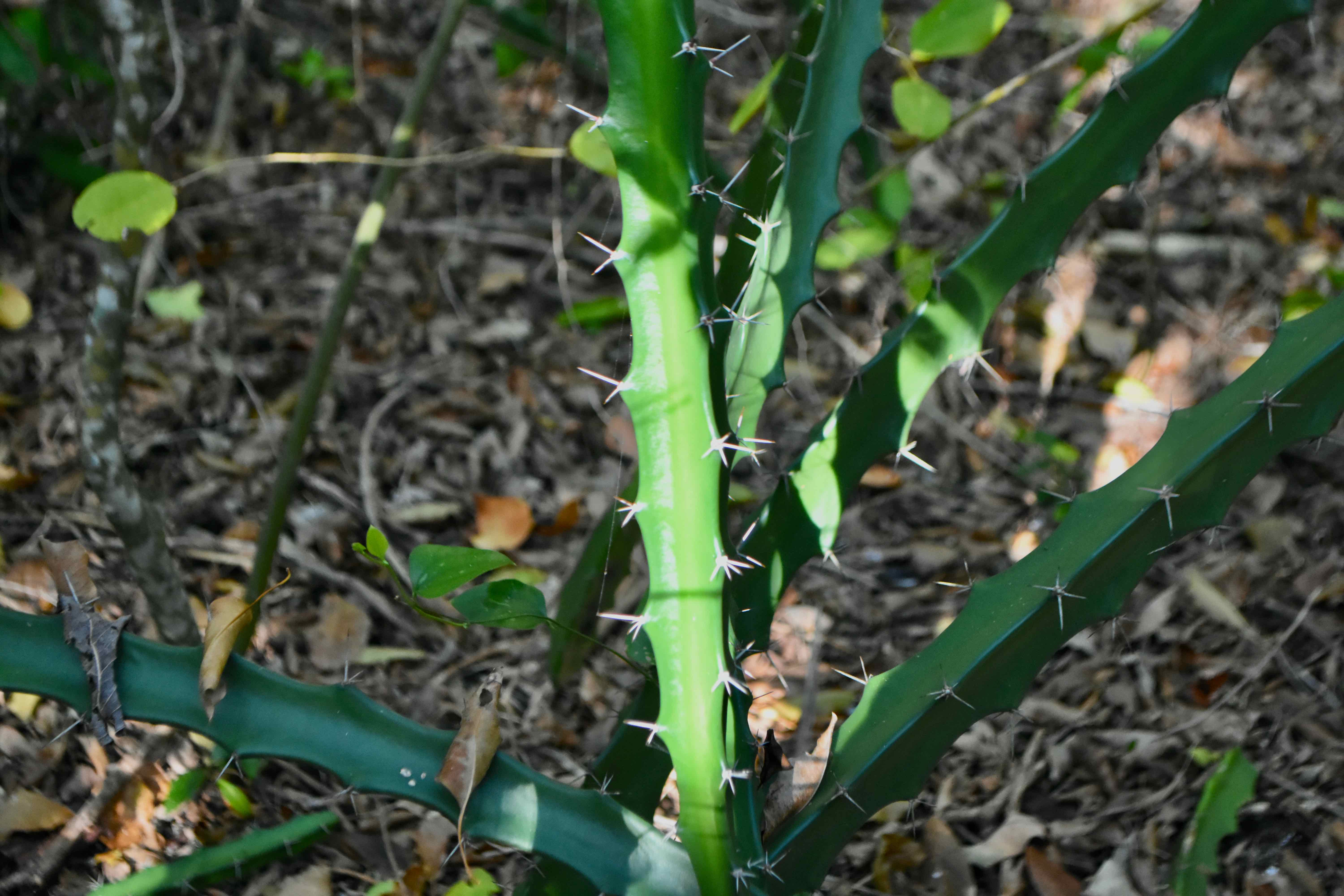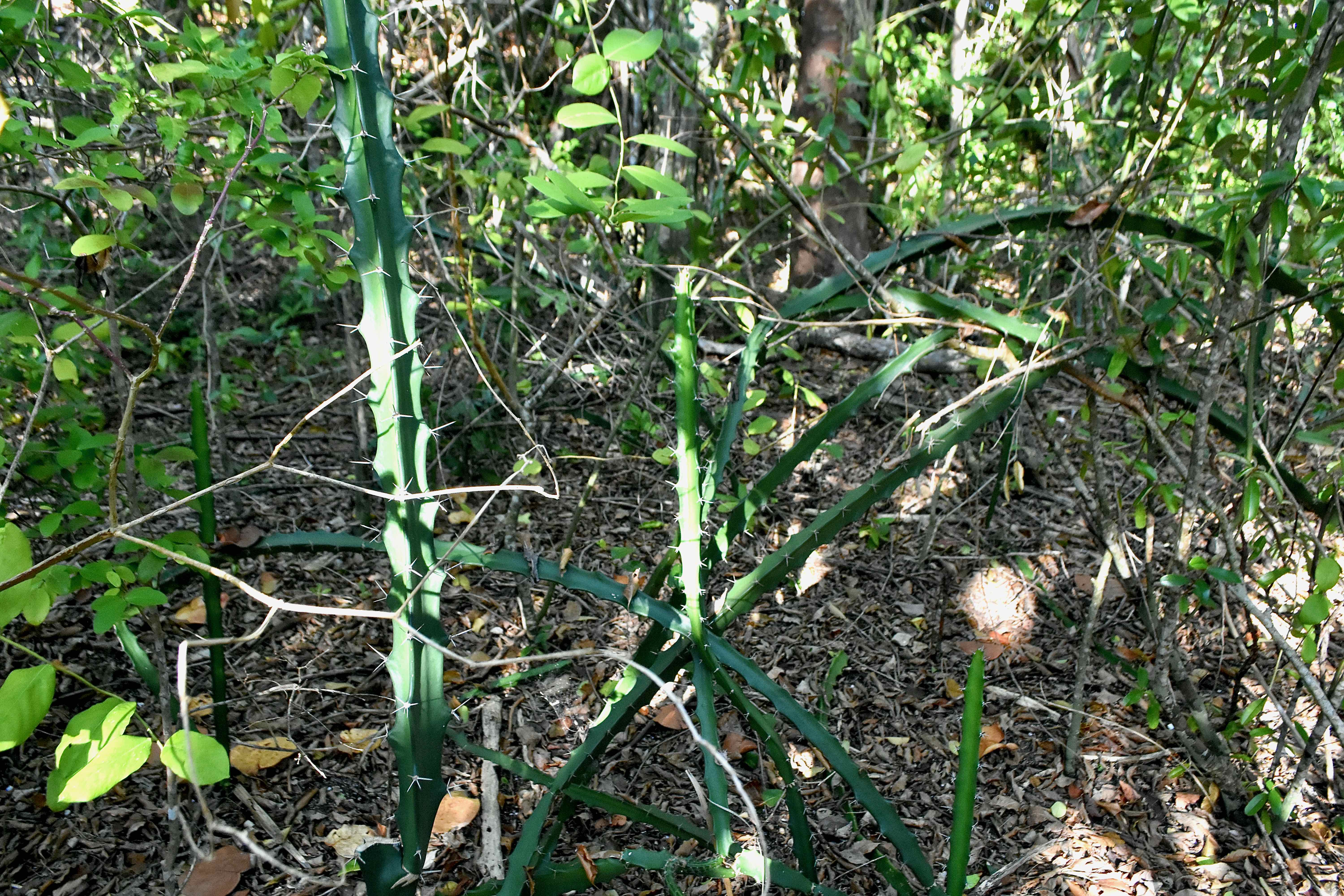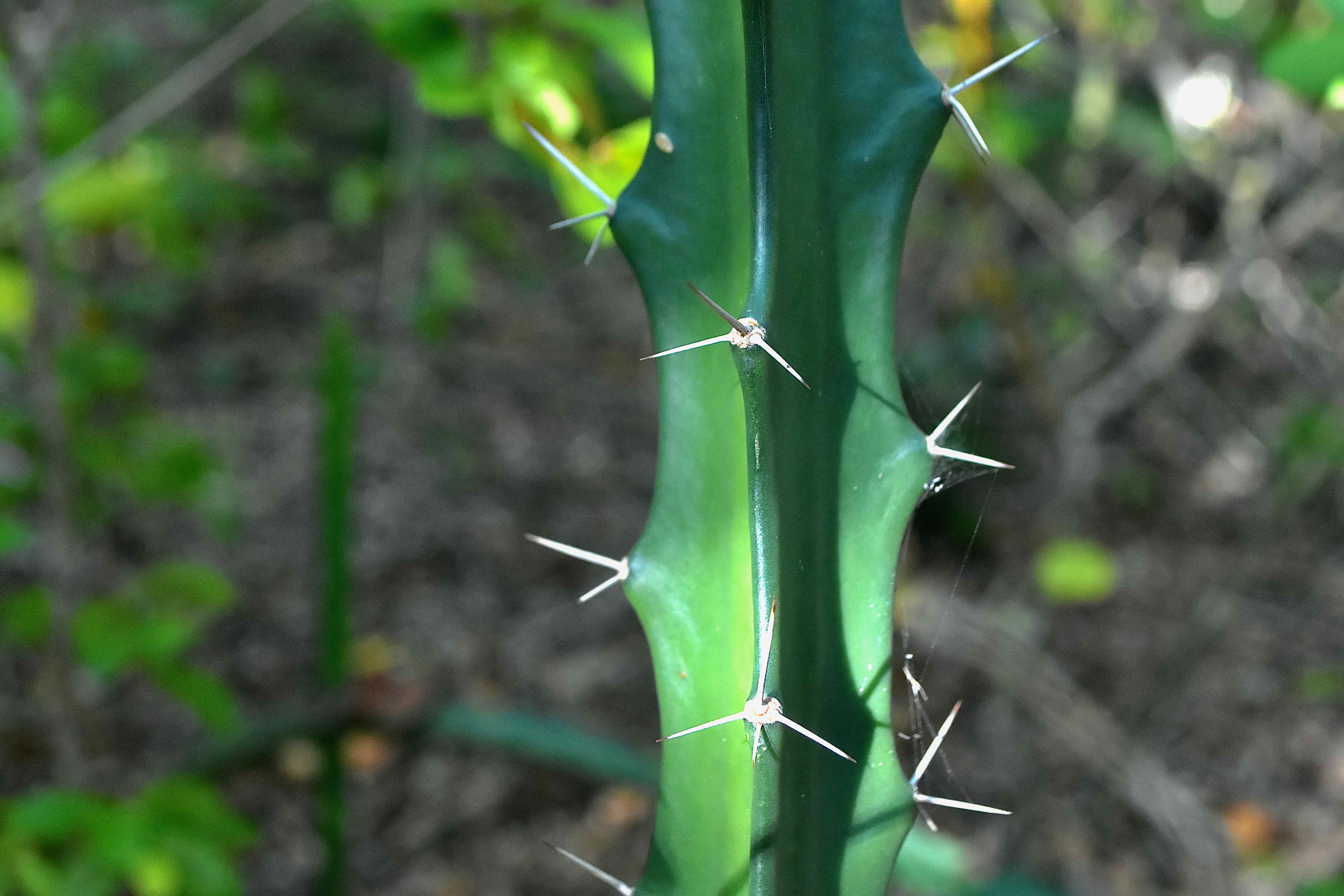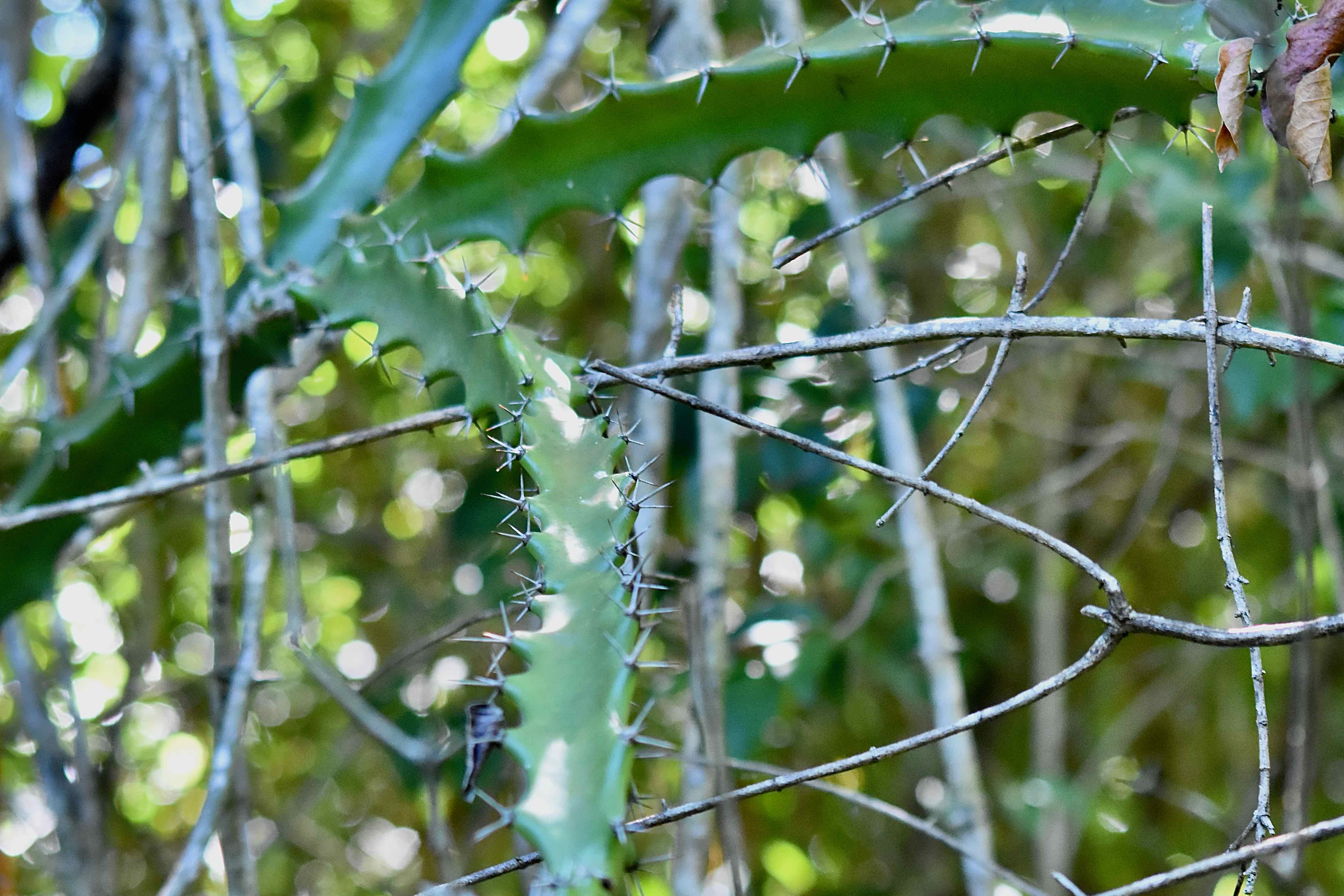
Triangle cactus, photographed at John D. MacArthur Beach State Park, North Palm Beach, Palm Beach County, in October 2023.
So how does a three-sided plant with the common name of triangle cactus get a scientific name meaning four-sided cactus? Good question. Glad you asked.
Turns out both names are descriptively accurate. How can that be, you ask? Even a child isn’t going to confuse three sides with four.
The answer is that the mature stems of triangle cactus indeed have three sides, forming a triangle if you will. Immature stems have four sides, sometimes five, so the scientific name Ancanthocereus tetragonus, tetragonus, meaning four sides, also works.
If you don’t want to play the numbers game, there are a couple of numerically neutral alternatives: barbed wire cactus, which is fairly descriptive or the somewhat vulgar dildo cactus (we did not make that up). Take your pick, but most sources we’ve seen prefer triangle cactus, so that’s what we’ll use.
In any case, triangle cactus is a Florida native found in coastal counties as far north as Lee on the Gulf and St. Lucie on the Atlantic. It is found in every South Florida county sans Broward. Texas is the only other state in the union where triangle cactus is found, restricted there to four counties in the Rio Grande Valley and the extreme southern Gulf Coast.
Triangle cactus is also found in the Caribbean, Mexico, Central America and northern parts of South America. In Florida, triangle cactus is rare enough that the state lists it as threatened, probably because of the lack of habitat: it favors coastal hammocks with sandy soils. Although considered threatened in Florida, it is considered secure globally because of its wide geographic range.
The stems on triangle cactus are dark green and well armed with needles, each aerole generally having between three and five, hence the name barbed wire cactus, and relatively fast growing, able to reach six feet or more in a single season. Its capable of forming dense thickets, which wouldn't be too pleasant to walk through. The ribs are one to two inches tall and about a quarter- to half-inch thick. Triangle tends to clamber onto its neighbors or arch over and sprawl along the ground. It also can be be stout and upright.
Triangle cactus is a night bloomer, producing large, mostly white flowers from mid-summer into fall. Each flower can be five-and-a-half to eight inches across, with yellow stamen in the center. They bloom around midnight, then close as dawn approaches. They are a source of nectar for hummingbird moths.
The blooms give way to a shiny, sweet, red berry that is edible for us human types as well as other animals. The endangered Key Largo wood rat eats the stems of triangle cactus.
At one point, the triangle cactus growing in Florida was so sufficiently different from plants growing elsewhere that it was considered a separate species, A floridanus. Scientists later determined that triangle cactus’s features can be highly variable and that those of the Florida triangle cactus plans weren’t different enough to classify it as a separate species or even a subspecies.
Other common names include sword pear, chaco, dildoe cactus and the aforementioned barbed wire cactus and dildo cactus. It is a member of Cactaceae, the cactus family.



